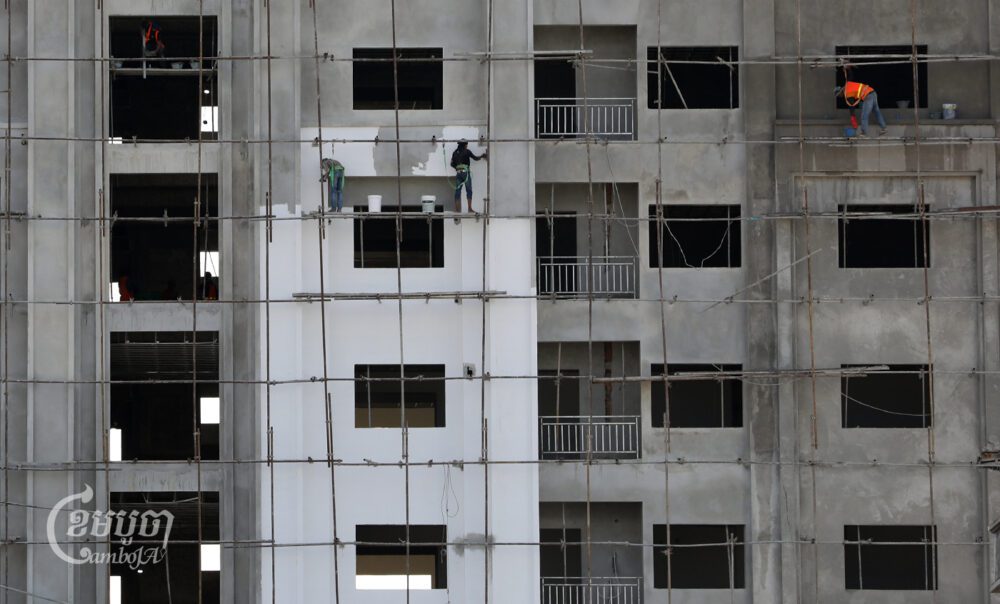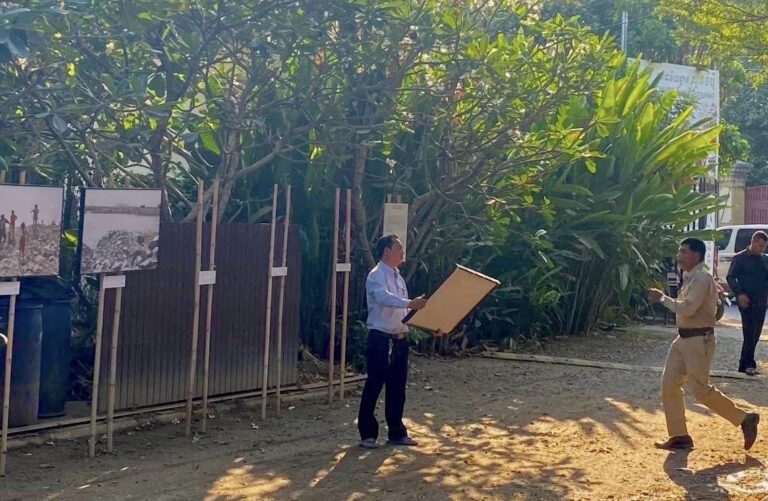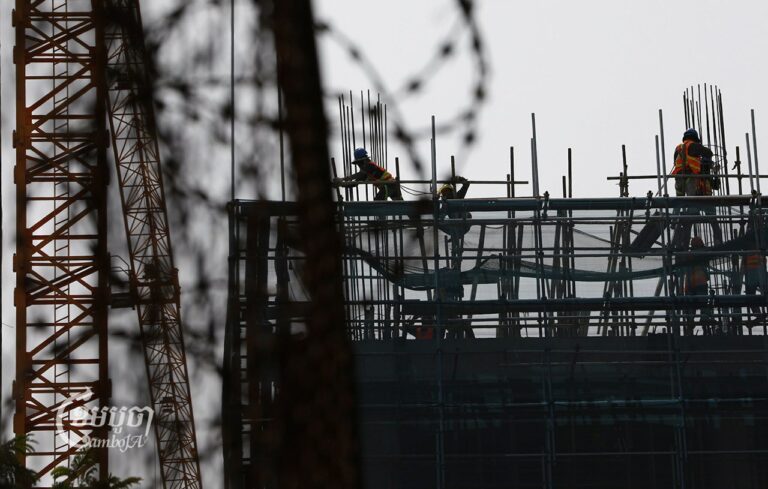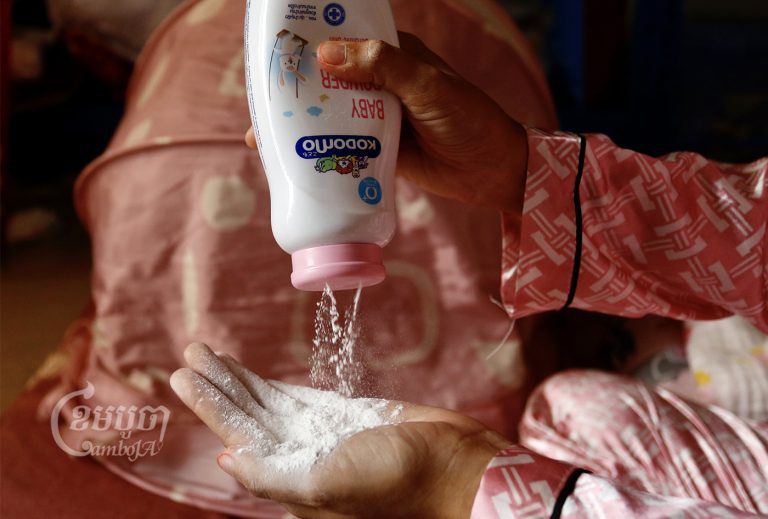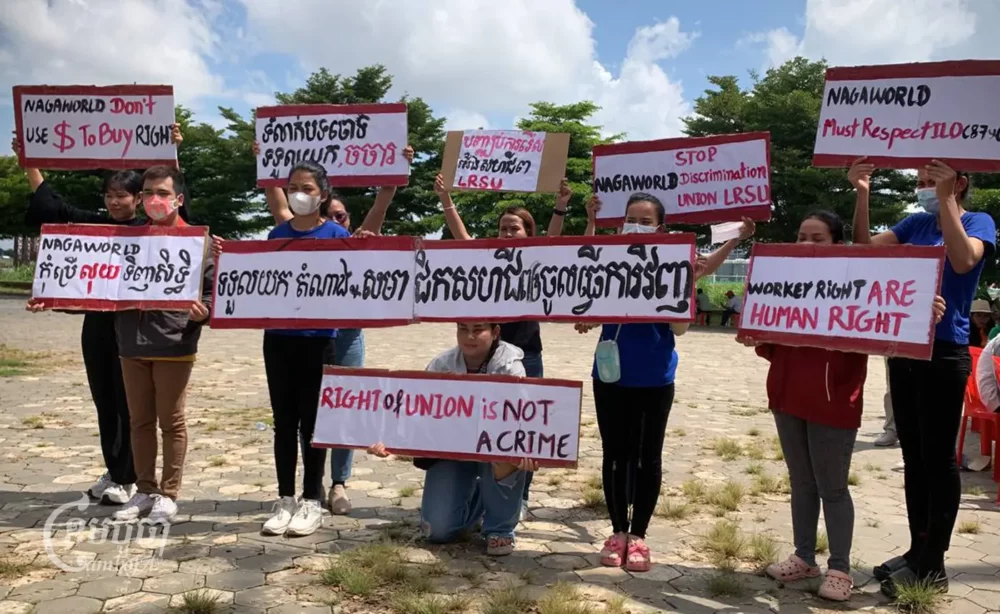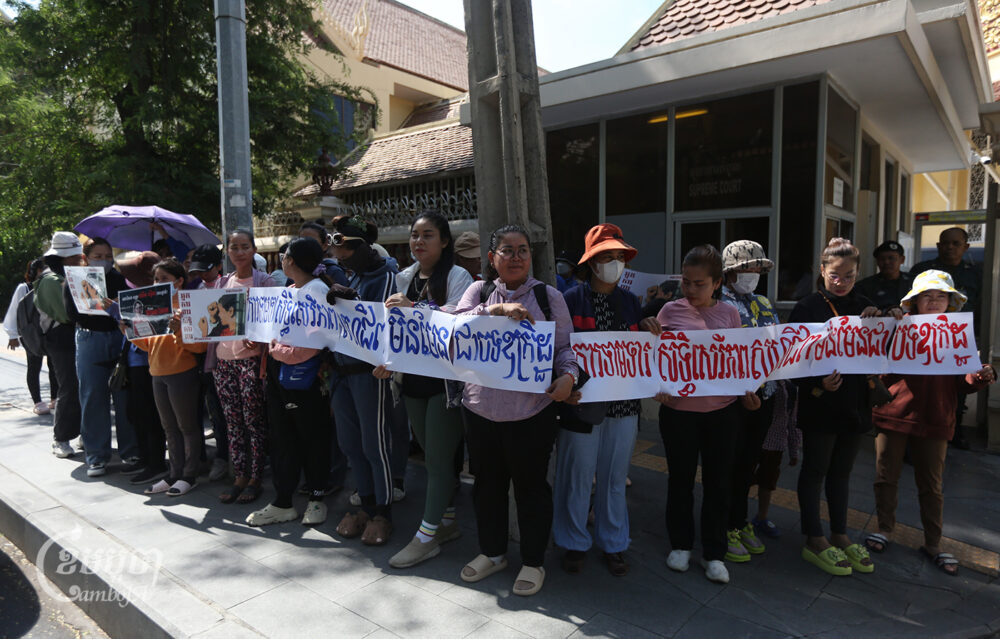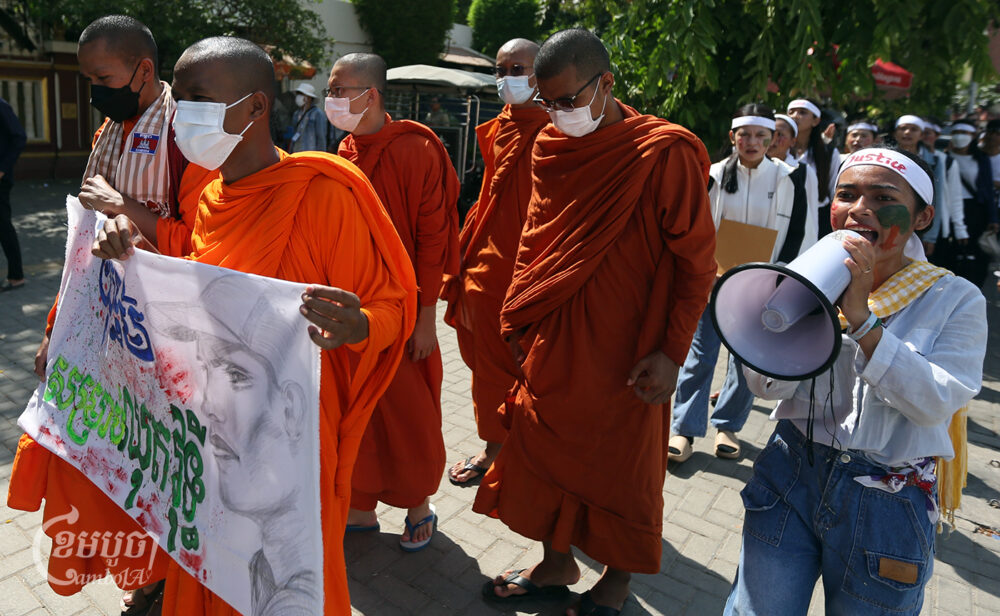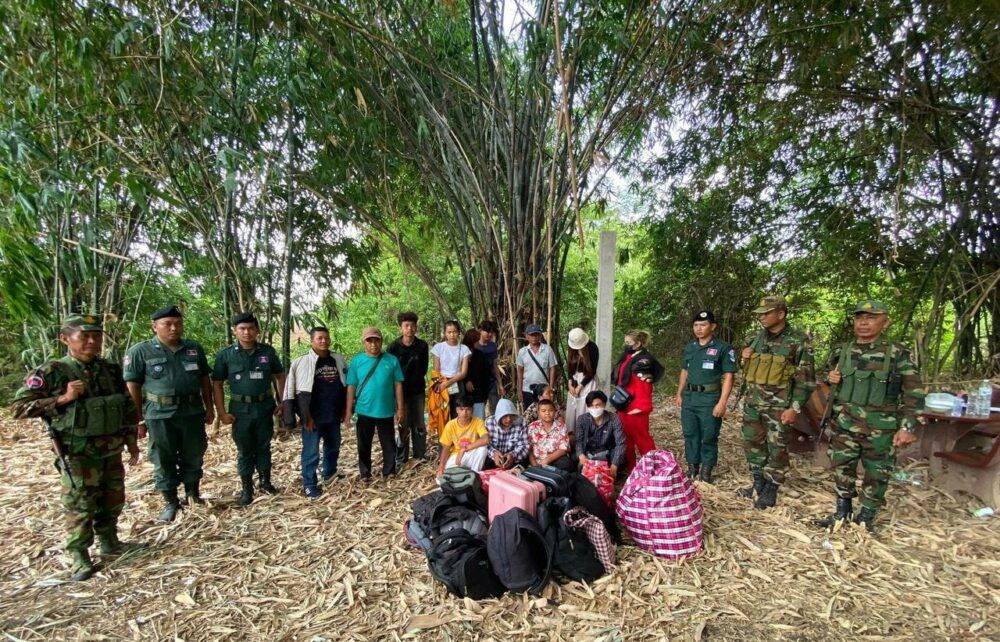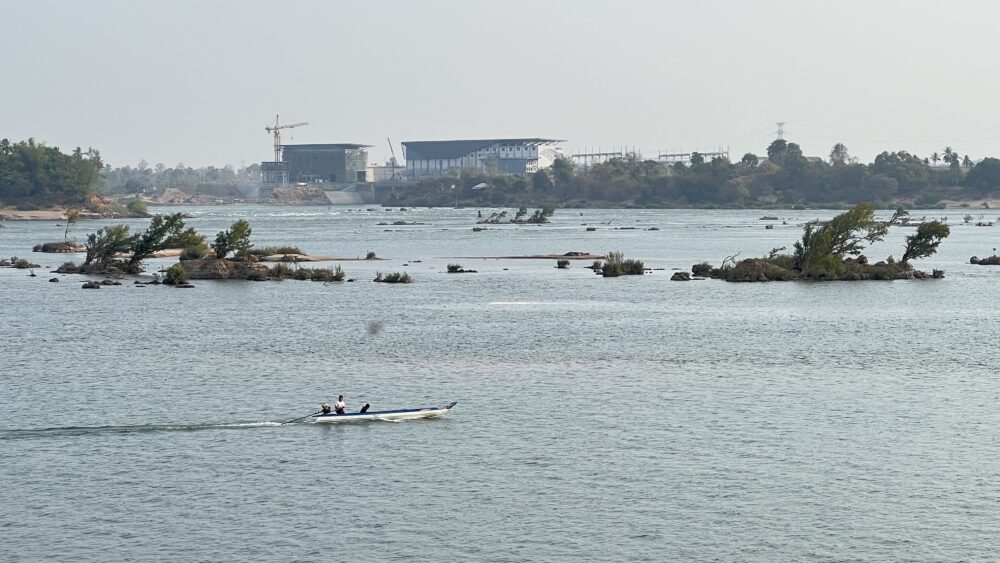The Ministry of Labor and Vocational Training (MLVT) and relevant partners would implement an action plan to ban asbestos from 2025 under the third Master Plan on Occupational Safety and Health (2023-2027). The government announced this commitment in May this year.
Commonly found in buildings, asbestos is an insulating material consisting of microscopic fibers of natural silica minerals. It offers heat and chemical resistance, and has fireproofing and strength properties, hence its popular use as a building material.
However, it has been proven to cause a number of cancers and other respiratory illnesses in people after being exposed to it. The Global Burden of Disease data states that some 170 people die of asbestos-related death (ARD) every year in Cambodia.
Huy Hansong, secretary of state of the ministry, said all parties need to work together to ensure that the ban is implemented in stages. It is not going to be easy though, he said, as the implementation needs to be based on the law, and at stages where Cambodia does not yet have law, it would be difficult.
“If we [set a plan to ban] then let’s do it, there is nothing wrong because it [asbestos] is the enemy, and it costs lives,” he said.
Speaking at the national workshop on banning asbestos under the master plan, Hansong reiterated the hazards of asbestos to humans.
With the help of the Australian government and relevant partners, MLVT developed the third master plan for occupational safety and health of workers.
“We are starting to wake up and pay attention to the danger of asbestos, which cannot be described. When we are sick because of asbestos, it [the illness] can’t be turned back as there is no cure, and the victim would suffer a miserable death,” said Hansong.
He pointed out that at least 400 tons of pure asbestos are imported, although there are a lot of materials containing asbestos in the market. He contended that he was not sure of the source of the asbestos, alleging that there might be a “secret trade”, but said there needs to be clear evidence to ascertain this.
Currently, more than 67 countries have banned the use of asbestos. Cambodia has yet to ratify Convention No. 162 on asbestos and a 2006 International Labor Organization (ILO) recommendation to ban its use.
Leng Tong, director of the Department of Occupational Safety and Health under MLVT, stressed that exposure to asbestos could lead to cancer in the future, therefore the government and related sectors should take serious action and ban its import.
“The construction sector can stop the import of asbestos. We [also] need to think how to deal with the asbestos that is already stored in Cambodia. However, the first priority is to ban its import.”
“Cambodia doesn’t produce asbestos. It imported 288 tons from China in 2021 and 5,124 tons of corrugated asbestos cement sheets from Thailand, Russia, Vietnam and China. Russia produces the most amount of asbestos,” said Leng Tong.
Since 2014, APHEDA Cambodia (APHEDA) has signed three agreements with MLVT to implement the action plan of the project to prevent the use of asbestos in Cambodia by educating the construction sector and unions about its danger.
According to CARE International in Cambodia, the construction sector has an estimated 175,000 to 200,000 workers, most of them unskilled and informal workers.
Yann Thy, secretary-general of the Building and Wood Workers Trade Union Federation of Cambodia (BWTUC), welcomed the third master plan to end the use of asbestos in 2025. “It is what we and the workers want from the government.”
Thy said to end asbestos use, Cambodia should create a new law or regulation to ban its import because without it, it is going to be hard to pursue it.
“We need a Prakas or law to point out on that matter, to show how we can prevent it. Actually, asbestos is everywhere in the construction sector, so if in 2025, we can stop the import of asbestos, it is a good [start],” said Thy.

However, he was concerned about the lack of awareness that the impact of asbestos on workers and the public was so harmful. “No one can avoid the harm of asbestos as it is everywhere.”
The third master plan (2023-2027) has six strategies. The first strategy addresses the development and adoption of occupational safety laws, which are in line with ILO’s safety principles.
The master plan aims to ban all types of asbestos including asbestos-containing materials, promote the use of alternative materials, establish mandatory regulations on safety procedure of asbestos abatement, ensure health surveillance on high-risk workers and add ARDs (asbestos-related deaths) to the list of occupational diseases.
Asbestos causes an estimated 255,000 deaths annually worldwide. Illnesses can develop many years after exposure, and cause mesothelioma and cancer of the lung, larynx or ovaries, as well as asbestosis and pleural diseases such as plaques, thickening or effusion.
WHO data in 2020 recorded 1,897 cases of lung cancer and 1,654 deaths in Cambodia. The report also showed that various studies have been conducted on asbestos import, consumption and health effects, although there was no link to ARD, including mesothelioma.
Reth, a construction worker in Phnom Penh, said he was not aware of construction materials containing asbestos but lauded the government’s decision to ban asbestos from 2025.
“I didn’t know that construction materials contained asbestos. Sometimes my hands get itchy, but it heals after that. I strongly support the government for doing this. It is good for the public and workers ,” Reth added.
Justine Ross, CEO of Australian Asbestos Safety and Eradication Agency (ASEA), told CamboJA via email that all types of asbestos cause cancer.
She said Cambodia should learn from Australia by not delaying action because the longer it takes to ban its use, there might be more diseases and deaths in future. Cambodia can draw on the models for imposing prohibitions and producing guidance that have been developed to prevent asbestos exposure in other countries.
“We commend the Cambodian government for taking action to protect the safety of workers, especially now before hazardous manufacturing of products like asbestos roof sheets commence in the country,” she added.
Justine asserted that the risk of legal action from government inaction could be significant in the future as victims seek compensation for their injuries. The master plan, which sets out step-by-step key actions and timeframe, is good.
Because the challenges related to asbestos is a multifaceted issue, she said, “government agencies need to work together to ensure there is a coordinated approach to deal with asbestos in both the occupational and non-occupational environment.”
Ouch Vuthy, president of the Virtuous Medical Association, said construction workers are at great risk and could suffer health issues in the future, such as respiratory problems, skin cancer, hair loss and eye injury.
Workers should have protective measures and practice safety because there have been incidents of construction workers working without proper protection, which is a risk to their health, he said, urging the government to solve the hazardous material problem soon.


